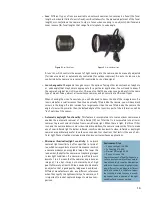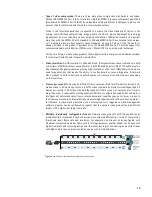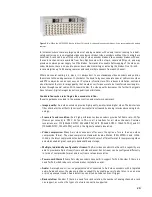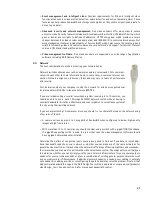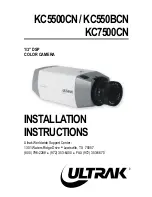
20
Figure 2.2.c.
When the AXIS Q7900 Rack is fully outfitted with 6-channel video encoder blades, it can accommodate 84 analog
cameras.
In instances where there are large numbers of analog cameras with coaxial cables running to a dedi-
cated control room, rack-mounted video encoders or blades (video encoders without their casings) are
beneficial. A rack can be outfitted with a mix of video encoder blades. Video encoder blades with one,
four and six channels are available from Axis. Racks come with network, serial and I/O ports, and may
provide a common power supply to all the blades. Axis racks also enable hot swapping of the video en-
coder blades so there is no need to power down when installing or removing the blades. One 19-inch
rack can digitize up to 84 analog cameras and send multiple streams from each channel.
Where no coaxial cabling is in place, it is always best to use standalone video encoders and position
them close to the analog cameras. It eliminates the need to lay new, separate coaxial cables since video
and PTZ commands can be sent over an IP network infrastructure. This reduces installation costs and
also eliminates the loss in image quality that would occur if video were to be transferred over long dis-
tances through coaxial cables. With coaxial cables, the video quality decreases the further the signals
have to travel. Digital images do not lose quality over distance.
Considerations when selecting a video encoder solution:
(See also guidance provided in the previous section under network cameras.)
>
Image quality:
Axis video encoders provide high-quality, deinterlaced digital video. The deinterlace
filter eliminates the artifacts (a series of horizontal lines) caused by analog interlaced scanning tech-
nology.
>
Frame rate and resolution:
Axis’ high performance video encoders provide full frame rate—30 fps
(frames per second) in NTSC, 25 fps in PAL—in all resolutions for all video channels. Common
resolutions are: CIF (352x240 NTSC, 352x288 PAL), 4CIF (704x480 NTSC, 704x576 PAL), and D1
(702x480 NTSC, 720x576 PAL), which is the highest available resolution.
>
Video compression:
Many Axis video encoders offer users the option of more than one video
compression format. The video compression standards include Motion JPEG, MPEG-4 and H.264.
H.264 is the latest compression standard that offers the most efficient format for compressing video
and which enables great savings in bandwidth and storage.
>
Multiple, individually configurable streams:
The Axis video encoders that have this capability are
able to provide multiple streams from each video channel. Each stream can be configured differently
in terms of compression format and level, frame rate and resolution.
>
Power over Ethernet:
Some Axis video encoders have built-in support for PoE. Consider if there is a
need for PoE, which reduces costs and makes installation easier.
>
Audio:
A microphone or line-in equipment can be connected to Axis video encoders with integrated
audio. Audio enhances the video surveillance capability by enabling users to also listen in on an area
or pick up unusual sounds. Audio detection can also be used as an event trigger.
>
Rack solution:
Consider if there is a need for a rack solution, the number of analog channels a rack
can support, as well as the types of network connection supported.
Summary of Contents for IP-Surveillance system
Page 49: ...49 ...









